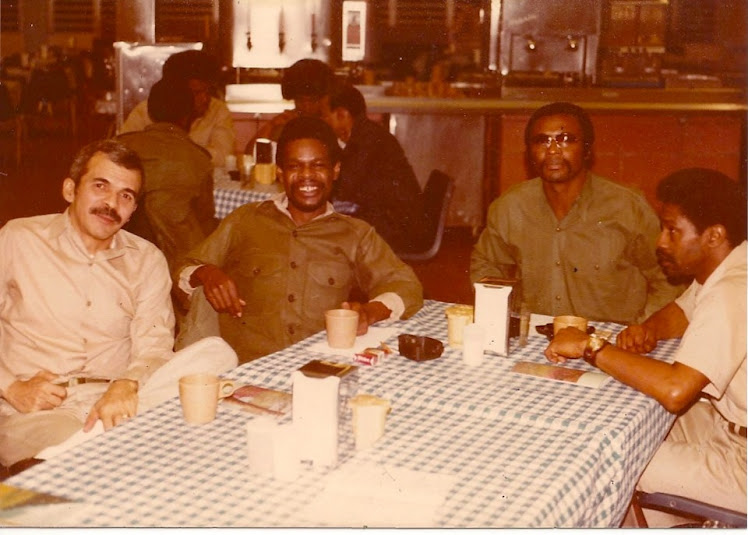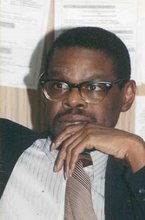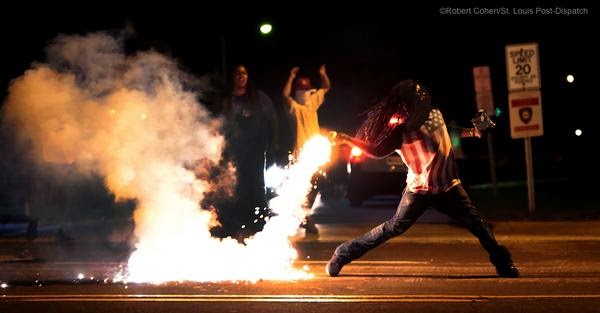As told by Eddie Griffin
Wednesday, July 09, 2008
I took a stroll yesterday through downtown Fort Worth, fascinated by the rich history of what remains of
Hell’s Half Acre, the remnant the Old Wild West.
In the 1880s, Fort Worth was the “queen city of the prairies”, and attracted the likes Luke Short, and his buddies, Bat Masterson, Wyatt Earp, “Doc” Holidays, and quick-draw, “Longhair Jim” Courtright.
John Swartz reputedly snapped the infamous 1901 picture of Butch Cassidy and the Sundance Kid and the "Wild Bunch", living it up in Hell’s Half Acre, right in the middle of now downtown Fort Worth, where fortunes were won and lost overnight, where they burned hundred dollar bills to light a cigar, and rubbed the golden godless for luck in the lobby of the
El Paso Hotel.

Photo taken at 705 ½ Main St.
Standing left to right: William Carver, Harvey Logan
Seated left to right: Harry Longbaugh (Sundance Kid), Ben Kilpatrick, Robert Leroy Parker (Butch Cassidy)
The photographer was so proud of this group photo that he place a copy in the downstairs window where it was spotted by a passing Wells Fargo agent who recognized Harvey Logan. (The Wells Fargo office was at 817 Main Street.) Pinkerton agents and lawmen descended on downtown Ft. Worth, and the Cassidy gang fled in all directions.
On February 20, 1901, Butch, Sundance and Etta Place boarded a ship in New York, bound for South America. By May 15, 1901, the first wanted posters of the gang bearing the photo likenesses taken at 705 Main Street rolled off the presses.What were they doing in Fort Worth?By 1871,
Burk Burnett made his first cattle drive from North Texas along the Chisholm Trail to Kansas in 1866. By 1871, Burnett began to build the 6666 Ranch. While drilling for water, he struck oil. The streets of Fort Worth were gushing in oil.
As the importance of Fort Worth as a crossroads and cowtown grew, so did Hell's Half Acre. It was originally limited to the lower end of Rusk Street (renamed Commerce Street in 1917) but spread out in all directions until by 1881 the Fort Worth Democrat was complaining that it covered 2½ acres… These boundaries, which were never formally recognized, represented the maximum area covered by the Acre, around 1900. Occasionally, the Acre was also referred to as "the bloody Third Ward" after it was designated one of the city's three political wards in 1876.
Long before the Acre reached its maximum boundaries, local citizens had become alarmed at the level of crime and violence in their city. In 1876 Timothy Isaiah (Longhair Jim) Courtright was elected City Marshal with a mandate to tame the Acre's wilder activities. Courtright had served as an army scout and acquired the name Longhair, after the style in which scouts often wore their hair. He always wore two six-shooters, butts forward, and drew from the right hip with the right hand.
Courtright cracked down on violence and general rowdiness by sometimes putting as many as 30 people in jail on a Saturday night, but allowed the gamblers to operate unmolested. After receiving information that train and stagecoach robbers, such as the Sam Bass gang, were using the Acre as a hideout, local authorities intensified law-enforcement efforts. Yet certain businessmen placed a newspaper advertisement arguing that such legal restrictions in Hell's Half Acre would curtail the legitimate business activities there.
Despite this tolerance from business, however, the cowboys began to stay away, and the businesses began to suffer. City officials muted their stand against vice. Courtright lost support of the Fort Worth Democrat and consequently lost when he ran for reelection in 1879.
Courtright was hired temporarily as deputy marshall during the Great Southwest Strike of 1886. In March, master workman Martin Irons of the Knights District Assembly 101 called a strike against Gould's Texas and Pacific Railway after the firing of a foreman in Marshall. The conflict rapidly spread to the other roads in the Southwest. Violence soon erupted after workers impeded railroad operation by uncoupling cars and seizing switch junctures. Gould hired scabs (strikebreakers) and Pinkerton detectives, and requested military assistance from state governors; Governor John Ireland sent both state militia and Texas Rangers to Buttermilk Switch in Fort Worth.
Against the wishes of striking railroaders, Courtright attempted to move the trains and, when two killings occurred, was blamed for siding with the railroads.
The Outlaws Come to TownIn February 1881 Bat Masterson accompanied Wyatt Earp and Luke Short to Tombstone, Arizona, where he assisted Earp at the gaming tables of the Oriental Saloon. He served for a time as a deputy sheriff in Las Animas, Colorado, and in 1883 was instrumental in persuading the governor of Colorado to prevent the extradition of Doc Holliday to Arizona. Masterson made his first try at the newspaper business in 1885, but his paper, the Vox Populi, ceased publication after a single issue. In 1886, in a surprising move, he briefly became a prohibitionist and closed the Dodge City saloons after being appointed a special officer. His conversion was short-lived, however. By 1887 he was working with Luke Short at the White Elephant Saloon in Fort Worth, Texas.
Luke Short was still living in Tombstone in 1881 when he was involved in a famous gunfight with a gunfighter named Charlie Storms, outside the Oriental Saloon. Storms and Short had been involved in a verbal argument earlier, which was defused by Bat Masterson, who was friends with both Short and Storms. Storms then met them on the street, jerked Short by the arm off the boardwalk, then went for his own gun. Short was the faster, killing Storms with one shot to the chest before his enemy could use his pistol. The fight was at such close quarters that Short's muzzle flash set Storms shirt on fire… point-blank range with .45 caliber derringer up the sleeve. Short was arrested for the shooting, and given a hearing, at which time the shooting was ruled to have been self defense.
In 1883 Short settled in Dodge City, Kansas, where he purchased a half interest in the now famous Long Branch Saloon, partnered with friend W.H. Harris. This put him at odds with the mayor of Dodge and his allies, who made attempts to run him out of town as an "undesirable". In what became known as the Dodge City War, Luke's friends rallied a formidable force of gunfighters to support him, including Bat Masterson, Wyatt Earp, Doc Holliday, and Charlie Bassett. Faced with the threat of force, Short's opponents allowed him to return without a shot being fired. Later that year he sold his interest and moved to Fort Worth, Texas.
Throughout the 1880s and 1890s the Acre continued to attract gunmen, highway robbers, card sharps, con men, and shady ladies, who preyed on out-of-town and local sportsmen.
On a cold night,
February 8, 1887, Courtright called Short out of the
White Elephant Saloon. Courtright reportedly had been drinking, some words were passed, and the two men walked down the street about one block. There, facing one another, Courtright said something in reference to Short's gun, apparently to give the impression that the inevitable gunfight was in the line of duty. Short stated he was not armed, although he was. Short then indicated that Courtright could check for himself, and walking toward Courtright, he opened his vest. When he did so, Courtright said loudly "Don't you pull a gun on me.", and quickly drew his pistol.
However, Courtright's pistol hung on his watch-chain for a brief second, at which time Short pulled his pistol and fired one shot. The bullet tore off Courtright's right thumb, rendering him incapable of firing his single-action revolver. As he tried to switch the pistol to his left hand, Short fired at least four more times, killing him.
The gunfight became a well known event due to the notoriety of both men. Courtright was given a grand funeral with hundreds in attendance, as despite his corruption, he had lowered Fort Worth's murder rate by more than half during his time as town marshal. No blame was held toward Short however, and although he was brought to trial for the shooting, it was ruled justified self defense.
A major reform campaign in the late 1880s was brought on by Mayor Boiles and County Attorney R. L. Carlock after two events. In the first of these, on February 8, 1887, Luke Short and Jim Courtright had a shootout on Main Street that left Courtright dead and Short the "King of Fort Worth Gamblers." A few weeks later a poor prostitute known only by the name of Sally was found murdered and nailed to an outhouse door in the Acre. These two events, combined with the first prohibition campaign in Texas, helped to shut down the Acre's worst excesses in 1889.
More than any other factor, urban growth began to improve the image of the Acre, as new businesses and homes moved into the south end of town. Another change was the influx of black residents. Excluded from the business end of town and the nicer residential areas, Fort Worth's black citizens, who numbered some 7,000 out of a total population of 50,000 around 1900, settled into the south end of town.
Between 1868 and 1900, forty-three African Americans served in the state legislature, and they helped to move the state toward democracy. Such black Reconstruction leaders as George T. Ruby and Norris Wright Cuney became important members of the Republican party and, along with other blacks, dominated state Republican politics through the turn of the twentieth century. During the course of the Reconstruction period, many African Americans moved from the state's rural areas to cities such as Dallas, Austin, Houston, and San Antonio. On the outskirts of these cities they established "freedmantowns," which became the distinct black neighborhoods that still exist today.
LILY-WHITE MOVEMENTThe "lily-white" movement began within the Republican partyqv after the Civil War. From the first days of Reconstruction, a fight developed not only in Texas but across the South between white and black factions for control of the newly formed party. As white GOP leaders sought "respectability" among Southern voters and a conviction grew that continued "black and tan" involvement thwarted expansion of the party, the lily-white Republicans began an organized effort to drive blacks from positions of party leadership. Though Texas blacks appealed to Northern party managers to halt the movement, lily-whiteism flourished because Republican presidents after 1865 wanted approval from the Southern white masses. The term lily-white apparently originated at the 1888 Republican state convention in Fort Worth, when a group of whites attempted to expel a number of black and tan delegates. Norris Wright Cuney, the black Texas leader who controlled the state party from 1883 until his death in 1896, promptly labeled the insurgents "lily-whites," and the term was soon applied to similar groups throughout the South.
Actually, an organized lily-white movement had begun in Texas during the 1870s, when the party was dominated by former governor Edmund J. Davis. But once Cuney gained the national committeemanship in 1884 upon the death of Davis, the lily-whites started a concerted drive for mastery. Though Cuney was reappointed to the national committee at the 1892 Republican national convention, the black-white struggle in Texas resulted in a fractured party and the first GOP state convention without a black and tan delegation in attendance. The 1892 election proved a turning point for both GOP factions as Cuney aligned the black and tans behind George Clark, a conservative Democrat, in his fight with James S. Hogg, and the lily-whites nominated Andrew Jackson Houston for the governorship. Houston, son of Sam Houston and a future United States senator, received only 1,322 votes in the November election, while Cuney suffered a dual setback: not only did Clark go down in defeat, but the Democrat Grover Cleveland won the presidency, so that Cuney lost all federal patronage.
Southern GOP leaders, black and white, relied upon the dispensation of federal jobs to maintain their state organizations; and when Cuney lost out under Cleveland, the door was opened for a lily-white takeover. Though Cuney was replaced as national committeeman as well as state chairman during the 1896 campaign, other black and tan leaders emerged to lead the state party. Edward H. R. Green (son of multimillionaire Hetty H. R. Green), who arrived in Texas to oversee his mother's railroad empire, captured the party after Cuney's downfall by forming a political alliance with William M. (Gooseneck Bill) McDonald, a black banker from Fort Worth. The Green-McDonald partnership, however, was unable to stem the lily-white insurgents, and after Green's withdrawal as state chairman in 1902, Cecil A. Lyon, a white businessman from Sherman, took control.
William “Gooseneck” McDonald, black millionaire and political powerhouseWilliam Madison (Gooseneck Bill) McDonald, politician, fraternal leader, and businessman, was born on June 22, 1866, at College Mound, Texas. His father had been a slave, his mother a free woman. He attended Roger Williams University in Nashville, Tennessee, with the aid of Z. T. Adams and other white friends.
McDonald became prominent in Texas Republican politics in 1892, when he was elected to the party's state executive committee. For more than thirty years he remained a notable figure of the party and attended many Republican national conventions.
After the death of Norris Wright Cuney in 1897, McDonald became leader of the Texas Republicans. In 1896 he formed a political partnership with Edward Howland Robinson Green, who became active in Texas Republican politics as a member of the "Black and Tan" faction. Although the two men remained together for many years and survived numerous political battles, control of the party was wrested from them in 1900 by the "Lily Whites."
In 1912, as a result of the "Bull Moose" upheaval, McDonald and the Black and Tans temporarily regained control of the party.
He moved to Fort Worth and, with the support of black lodges, founded the Fraternal Bank and Trust Company, which quickly became the chief depository of funds for the state's black Masonic lodges.
ReflectionsThe first black millionaire lived in our neighborhood in Southeast Fort Worth. I remembered the man, but knew nothing of his great political legacy. He fought the “lilly-white” movement in the Republican Party, until he flip to Democrat later in life.
But there is a strange insertion in his memoirs, about his friend in the Black and Tan wing of the party, Ned Green, son of the richest woman in the world. Gooseneck McDonald attended the funeral of Hetty Green, a guest of his friend Ned.
They called Hetty Green, a witch, because of the way she dressed, her frugal lifestyle, and body odor. But she was the richest woman in the world. So, they called her the Witch of Wall Street. She horded money and invested in Civil War bonds, known as “greenbacks”, which became the legal tender.
Hetty Green sent her son to Texas where she had bought an old half-completed Confederate Railroad line, out of Kaufman, Texas. Here is where Gooseneck McDonald was born and raised.
Ned was known for his lavish lifestyle in Texas. Now that he was independent of his mother, he had access to large sums of cash that he spent on the good life.
O how I remember the beautiful silver car streaming down the track. I believed we called it the Silverliner.In Chicago Ned Green had met Mabel Harlow, a prostitute who was his first sexual experience. He moved Mabel to Texas and set himself up in hotel suites where she supplied the girls and Ned supplied the customers, the rooms, and the champagne.
His friend, Gooseneck McDonald, began buying up land in the Third Ward District of Fort Worth, and laying trolley tracks, which was the railroad’s wave of the future.
Ned Green became his mother’s son, a master at protecting her assets. Recognizing this and now in her mid-sixties, Hetty brought him back to New York to oversee her financial affairs. She tolerated his extravagant lifestyle, which included a large suite at the Waldorf-Astoria (the original, built by the Astors, which stood at 34th Street and Fifth Avenue). Later Ned moved to two townhouses on West 91st Street and Central Park, where he and Mabel lived quietly and discreetly.
After his mother’s death, Ned would marry Mabel (with a pre-nup giving her $1500 a month for life). He spent his multimillion dollar annual income on luxurious estates in Florida, New York, and Massachusetts, and kept a coterie of “protégées” or “private secretaries” – pretty young teen-age girls who were given $100,000 trust funds and schooled to attend Wellesley (while visiting Ned and Mabel on weekends at the big house overlooking the water in Dartmouth, Massachusetts).
[Inquiries in the writing, please contact Eddie Griffin at evansavenue76104@yahoo.com]







